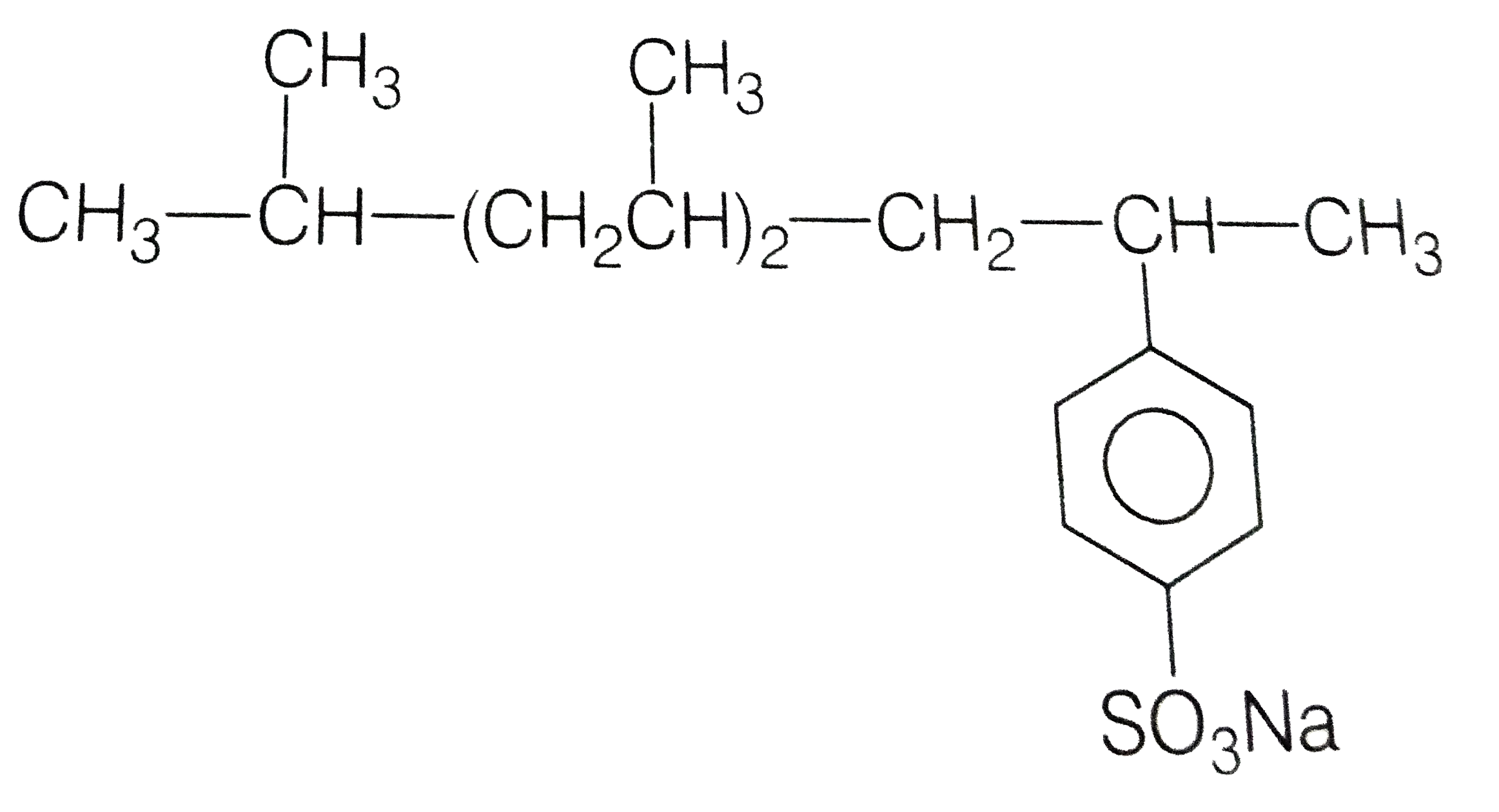If stearic acid and polyethylene glycol reacts then which of the following soap/detergent will be formed :
Cationic Detergent
Soap
Anionic Detergent
Non Ionic Detergent
To determine which soap or detergent is formed when stearic acid reacts with polyethylene glycol, we can follow these steps:
Step 1: Identify the Reactants
- Stearic Acid: The chemical formula for stearic acid is C18H36O2 or CH3(CH2)16COOH.
- Polyethylene Glycol (PEG): Polyethylene glycol is a polymer of ethylene oxide, typically represented as HO(CH2CH2O)nH, where n indicates the number of repeating units.
Step 2: Understand the Reaction
- Stearic acid is a fatty acid, and when it reacts with polyethylene glycol, it forms an ester. This reaction is a type of condensation reaction where water is eliminated.
Step 3: Determine the Type of Detergent
- The resulting compound from the reaction of stearic acid and polyethylene glycol will be a non-ionic detergent. Non-ionic detergents do not contain any charged groups (ions) in their structure.
Step 4: Write the Reaction
- The reaction can be summarized as:
C18H36O2+HO(CH2CH2O)nH→RCOO(CH2CH2O)n+H2O
where R represents the hydrocarbon chain from stearic acid.
Step 5: Conclusion
- The product formed is a non-ionic detergent, which is characterized by the absence of ionic groups in its structure.
Final Answer
The soap/detergent formed from the reaction of stearic acid and polyethylene glycol is a non-ionic detergent.
---
- Stearic Acid: The chemical formula for stearic acid is C18H36O2 or CH3(CH2)16COOH.
- Polyethylene Glycol (PEG): Polyethylene glycol is a polymer of ethylene oxide, typically represented as HO(CH2CH2O)nH, where n indicates the number of repeating units.
- Stearic acid is a fatty acid, and when it reacts with polyethylene glycol, it forms an ester. This reaction is a type of condensation reaction where water is eliminated.
- The resulting compound from the reaction of stearic acid and polyethylene glycol will be a non-ionic detergent. Non-ionic detergents do not contain any charged groups (ions) in their structure.
- The reaction can be summarized as:
C18H36O2+HO(CH2CH2O)nH→RCOO(CH2CH2O)n+H2O
where R represents the hydrocarbon chain from stearic acid.
- The product formed is a non-ionic detergent, which is characterized by the absence of ionic groups in its structure.
The soap/detergent formed from the reaction of stearic acid and polyethylene glycol is a non-ionic detergent.
Topper's Solved these Questions
Similar Questions
Knowledge Check
Which of the following soaps/detergents is least biodegrdable?
AC17H35−COONaBCH3−(CH2)11−OSO2NaC D
D
Which of the following soaps/detergents is least biodegradable?
AC17H35−COONaBCH3−(CH2)11−OSO2NaC D
D
Polyethylene glycols are used in the preparation of which type of detergents?
ACationic detergentsBAnionic detergentsCNon-ionic detergentsDSoaps
When Acetic acid reacts with CH3−Mg-Cl which of the following is/are formed?
View SolutionWhich of the following acid does not react with metals?
View SolutionPolyethylene glycols are used in the preparation of which type of detergent ?
View SolutionOxalic acid is formed when glycol is treated with :
View SolutionPolyethylene glycols are used in the preparation of which type of detergent ?
View Solution
